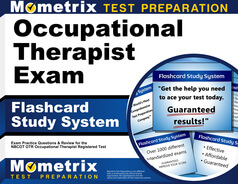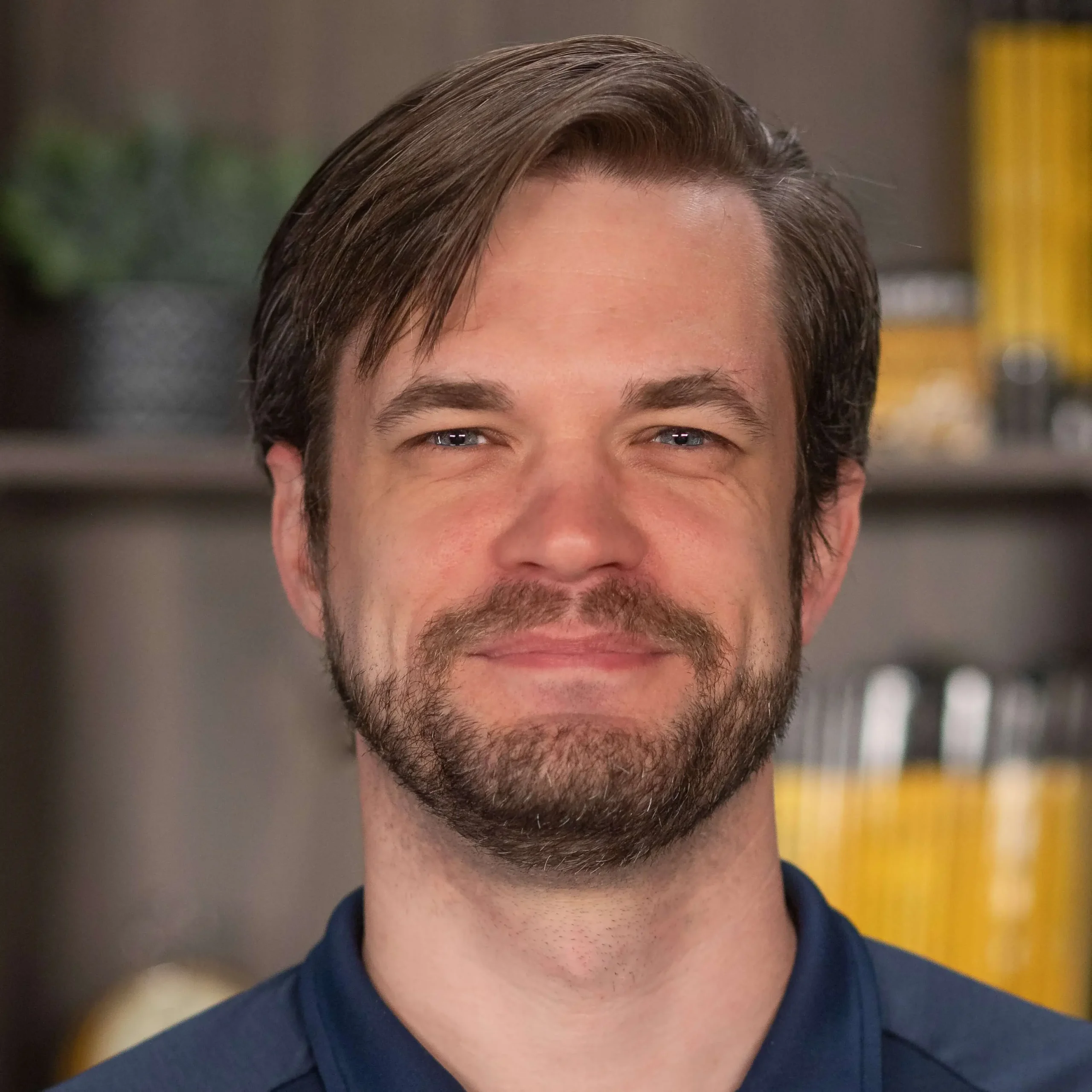The National Board for Certification in Occupational Therapy (NBCOT) administers the Occupational Therapist (OTR) exam for individuals pursuing a certification as a registered occupational therapist in the United States.
Click “Start Test” above to take a free Occupational Therapist practice test!
Occupational Therapist Exam Eligibility
To be eligible for the OTR exam, you must hold an occupational therapy degree from an ACOTE®-accredited OT program.
Occupational Therapist Exam Outline
The Occupational Therapist exam contains 180 questions and has a time limit of 4 hours.
Question Types
There are two types of questions that appear on the OTR exam:
- Multiple-choice: You must select one correct answer from a list of 3-4 answer choices.
- Clinical simulation: For each question, an opening scene is provided along with four response options. Each response option must be answered by checking off “Yes” or “No” next to each one.
Exam Contents
The exam is split into four content domains:
Three tasks are contained in this domain. The main goal of these tasks is to gather knowledge about the variables that affect occupational performance over the course of occupational therapy.
2. Analysis and Interpretation (23%)
In this domain, analysis and interpretation are divided into three tasks. You must come to conclusions about the needs and priorities of your clients in order to create and oversee an intervention plan throughout the occupational therapy process.
3. Intervention Management (38%)
With six tasks relating to intervention management, this is the longest section of the test. The occupational therapy process will require candidates to choose interventions for managing a client-centered plan.
4. Competency and Practice Management (16%)
Four tasks are included in this domain. In order to promote quality care, candidates will need to provide answers to questions about managing their own and others’ professional activities in accordance with the available evidence, legal requirements, and standards of practice.
Check out Mometrix's Occupational Therapist Study Guide
Get practice questions, video tutorials, and detailed study lessons
Get Your Study Guide
Registration
To register for the OTR exam, you must first create an online MyNBCOT account. Through this account, you can submit an application and the $540 examination fee.
Once your application has been approved, you will receive an email with your authorization to test (ATT) and information about how to schedule your exam appointment. You must take the exam within three months of receiving your ATT.
Test Day
You are required to arrive at the testing center at least 30 minutes before the scheduled appointment time. This allows enough time for you to get checked in.
When you arrive, you will be asked to show two forms of valid identification, one of which must contain your photo. Your palm vein will then be biometrically scanned, and a photograph will be taken of you.
You will then be asked to leave all personal items in a secure locker outside the testing area. This includes any electronics, books, notes, jewelry, phone, and food items.
Once the examination begins, you will be allowed to take breaks as needed. It is important to note that the timer will not be paused while you are away, so you should use your breaks wisely.
Scoring
The Occupational Therapist exam is scored using a criterion-referenced scaling system. This system takes your raw score, which is the number of questions you answered correctly, and converts it to a numerical score on a scale of 300 to 600. You must achieve a score of at least 450 to pass.
Check out Mometrix's Occupational Therapist Flashcards
Get complex subjects broken down into easily understandable concepts
Get Your Flashcards
Study Tips
How to Study Effectively
Your success on OTR test day depends not only on how many hours you put into preparing but also on whether you prepared the right way. It’s good to check along the way to see whether your studying is paying off. One of the most effective ways to do this is by taking Occupational Therapist practice tests to evaluate your progress. Practice tests are useful because they show exactly where you need to improve. Every time you take a free Occupational Therapist exam practice test, pay special attention to these three groups of questions:
- The questions you got wrong
- The ones you had to guess on, even if you guessed right
- The ones you found difficult or slow to work through
This will show you exactly what your weak areas are and where you need to devote more study time. Ask yourself why each of these questions gave you trouble. Was it because you didn’t understand the material? Was it because you didn’t remember the vocabulary? Do you need more repetitions on this type of question to build speed and confidence? Dig into those questions and figure out how you can strengthen your weak areas as you go back to review the material.
Answer Explanations
Additionally, many NBCOT practice tests have a section explaining the answer choices. It can be tempting to read the explanation and think that you now have a good understanding of the concept. However, an explanation likely only covers part of the question’s broader context. Even if the explanation makes sense, go back and investigate every concept related to the question until you’re positive you have a thorough understanding.
Comprehend Each Topic
As you go along, keep in mind that the OTR practice test is just that: practice. Memorizing these questions and answers will not be very helpful on the actual test because it is unlikely to have any of the same exact questions. If you only know the right answers to the sample questions, you won’t be prepared for the real thing. Study the concepts until you understand them fully, and then you’ll be able to answer any question that shows up on the test.
Strategy for Occupational Therapist Practice
When you’re ready to start taking practice tests, follow this strategy:
- Remove Limitations. Take the first test with no time constraints and with your notes and Occupational Therapist study guide handy. Take your time and focus on applying the strategies you’ve learned.
- Time Yourself. Take the second practice test “open book” as well, but set a timer and practice pacing yourself to finish in time.
- Simulate Test Day. Take any other practice tests as if it were test day. Set a timer and put away your study materials. Sit at a table or desk in a quiet room, imagine yourself at the testing center, and answer questions as quickly and accurately as possible.
- Keep Practicing. Keep taking practice tests on a regular basis until you run out of practice tests or it’s time for the actual test. Your mind will be ready for the schedule and stress of test day, and you’ll be able to focus on recalling the material you’ve learned.
FAQs
Q
How many questions are on the NBCOT OTR exam?
A
There are 180 questions on the exam.
Q
How long is the NBCOT OTR exam?
A
The time limit for the exam is 4 hours.
Q
What is the passing score for the NBCOT OTR exam?
A
To pass the exam, you must achieve a minimum scaled score of 450.
Q
How much does the NBCOT OTR exam cost?
A
The examination fee is $540.
NBCOT® is a registered trademark of the National Board for Certification in Occupational Therapy, Inc., which administers the NBCOT® exam. NBCOT does not endorse and is not affiliated in any way with Mometrix or its products and services.


